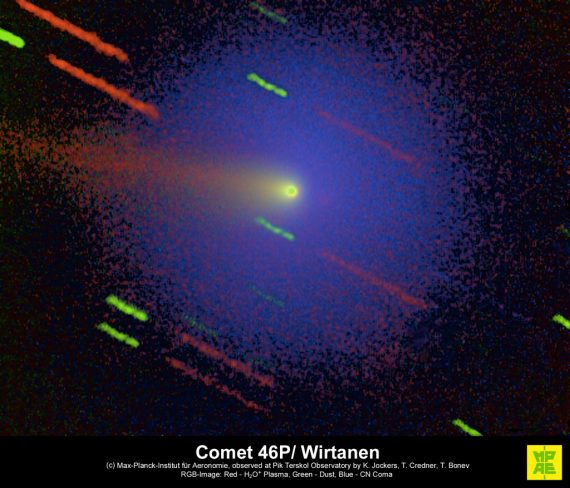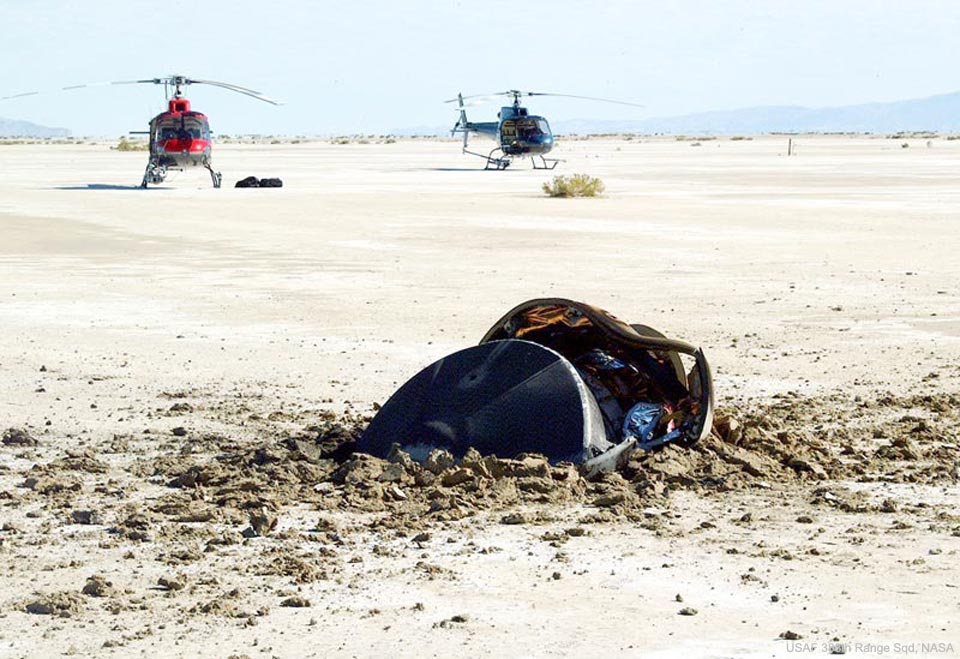 Préparez-vous ! La fin de l’année 2018 pourrait bien être consacrée à l’observation de la comète Wirtanen, dont l’éclat est prometteur. Le petit astre glacé, qui passe tout près de la Terre le 16 décembre, est aussi très bien placé dans le ciel pour tous les observateurs de l’hémisphère nord.
Préparez-vous ! La fin de l’année 2018 pourrait bien être consacrée à l’observation de la comète Wirtanen, dont l’éclat est prometteur. Le petit astre glacé, qui passe tout près de la Terre le 16 décembre, est aussi très bien placé dans le ciel pour tous les observateurs de l’hémisphère nord.
La comète Wirtanen est un petit corps composé de glaces et de poussières dont on estime le diamètre à 1,2 kilomètre. En orbite autour du Soleil, la comète Wirtanen en fait le tour en 5,4 ans sur une orbite de forme elliptique. Elle passe au plus près du Soleil à environ 158 millions de km et s’en éloigne jusqu’à une distance d’environ 760 millions de kilomètres, tout près de l’orbite de Jupiter. Comme cette comète est périodique, c’est à dire qu’elle s’approche de façon régulière du Soleil, cela permet de l’observer de façon répétée depuis la Terre. Et en décembre 2018, les conditions s’avèrent particulièrement favorables !

Image en fausses couleurs de la comète 46P/Wirtanen. Cet objet est habituellement peu lumineux et ses images proviennent le plus souvent d’observatoires professionnels ou d’amateurs avertis.
Car en s’approchant du Soleil, la comète s’échauffe, sa surface se vaporise, les matières éjectées formant une queue qui peut s’avérer spectaculaire à voir. Or, en cette fin d’année, la comète Wirtanen passe très près de la Terre : dans la soirée du 16 décembre, elle est à seulement 11,6 millions de kilomètres de nous, ce qui est très peu. Juste avant, le 12 décembre, elle passe au plus près du Soleil, ce qui signifie que son activité devrait être à son maximum. Cette proximité et cette forte activité devraient donc nous permettre d’observer facilement la comète, très probablement à l’œil nu.
Stelvision








